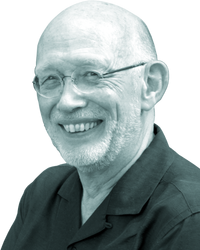
Over het archief
In 2012 verloren we Jean Jacques Peters, voormalig ingenieur van het Waterbouwkundig Laboratorium (1964 tot 1979) en internationaal expert in sedimenttransport, rivierhydraulica en -morfologie. Als eerbetoon aan hem hebben we potamology (http://www.potamology.com/) gecreëerd, een virtueel gedenkarchief dat als doel heeft om zijn manier van denken en morfologische aanpak van rivierproblemen in de wereld in stand te houden en te verspreiden.
Het merendeel van z’n werk hebben we toegankelijk gemaakt via onderstaande zoekinterface.
| [ meld een fout in dit record ] | mandje (1): toevoegen | toon |
 |
| one publication added to basket [341631] | |
| Modelling water availability and water allocation strategies in the Scheldt basin: sub report 4-2. Developing a rainfall-runoff model of the Meuse – NAM Meuse Maroy, E.; Michielsen, S.; Velez, C.; Pereira, F.; Nossent, J.; Mostaert, F. (2021). Modelling water availability and water allocation strategies in the Scheldt basin: sub report 4-2. Developing a rainfall-runoff model of the Meuse – NAM Meuse. Version 2.0. FHR reports, 00_162_4-2. Flanders Hydraulics Research: Antwerp. X, 36 + 78 p. app. pp. https://dx.doi.org/10.48607/28
Deel van: FHR reports. Flanders Hydraulics Research: Antwerp
| |
| Beschikbaar in | Auteurs |
| |
| Documenttype: Projectrapport | |
| Trefwoorden |
Earth sciences > Geology > Hydrology Numerical modelling Water management > Hydrology > Conceptual models België, Maas R. [Marine Regions] |
| Author keywords |
|
| Project | Top | Auteurs |
|
| Auteurs | Top | |
|
|
| Abstract |
The Meuse catchment is split up in 11 sub catchments. One big catchment of the Meuse itself upstream from Profondeville, 7 catchments of different scale of the tributaries downstream of Profondeville and 3 smaller catchments representing the ungauged area downstream Profondeville. Except for the catchment upstream from Profondeville, the catchments are calibrated separately to find an optimal parameter set. To assess the parameters for modelling the upstream catchment, the latter was split in 5 sub catchments which were calibrated separately. However, for the purpose of the water availability modelling of the Albert Canal and Campine canals, the area upstream from Profondeville is simulated by using the parameters of the biggest sub catchment (i.e. the French part of the Meuse catchment). The optimization during calibration is performed based on an automatic procedure, followed by a visual control. During the optimization routine the parameter sets are selected based on 2 criteria: (1) absolute error on cumulated total flow at each time step, and (2) logarithmic Nash-Sutcliff efficiency. The first criterion aims to model the global flow pattern, the latter focuses mainly on the low flows. In general the simulation of the hydrology of the Meuse catchment gives fairly good results bearing in mind that it is used for simulations on a regional scale. |
| Top | Auteurs |


